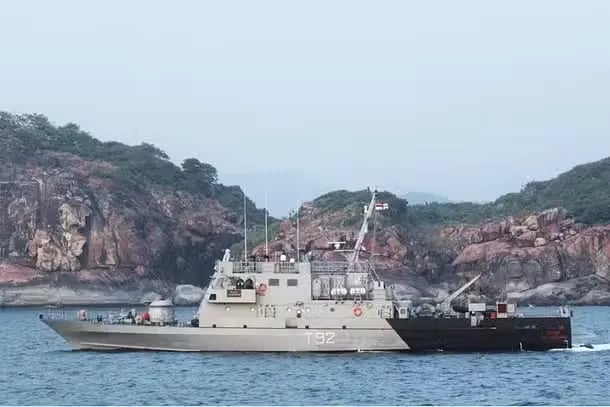Add your promotional text...
Strengthening India's Defense Arsenal: Government Approves Capital Acquisitions Worth ₹21,772 Crore
Synopsis In a landmark decision to bolster India’s defense preparedness, the government has approved five major capital acquisition proposals totaling ₹21,772 crore. This strategic move includes procurement of advanced watercraft, interceptor crafts, electronic warfare suites, and modernization efforts to strengthen the nation's security capabilities..
TOP STORIES
By Vishwas Saxena
12/4/20243 min read


A Comprehensive Boost to India’s Defense Infrastructure
On Tuesday, the Defence Acquisition Council (DAC), chaired by Defence Minister Rajnath Singh, approved five pivotal capital acquisition proposals amounting to over ₹21,772 crore. This decision signifies a determined effort to enhance India’s defense capabilities through modern equipment and technology. Let’s delve into the details of these acquisitions and their implications for national security.
1. 31 New Water Jet Fast Attack Crafts (NWJFACs)
The Indian Navy is set to receive 31 New Water Jet Fast Attack Crafts (NWJFACs) designed to execute a wide range of coastal operations. These high-speed vessels are tailored for low-intensity maritime missions, surveillance, and search and rescue (SAR) operations close to the coastline.
Beyond these roles, the NWJFACs will be instrumental in combating piracy, especially near India’s island territories. The acquisition underscores the Navy’s commitment to securing India’s maritime interests.
2. 120 Fast Interceptor Craft (FIC-1)
Another significant addition to India’s naval arsenal is the procurement of 120 Fast Interceptor Craft (FIC-1). These vessels are multipurpose assets capable of escorting high-value units such as aircraft carriers, submarines, and destroyers, making them a critical component of coastal defense.
Their versatility ensures effective performance in safeguarding strategic assets, responding to security threats, and enhancing maritime domain awareness.
3. Electronic Warfare Suite (EWS) for Su-30 MKI Aircraft
The DAC also approved the procurement of cutting-edge Electronic Warfare Suites (EWS) for the Su-30 MKI fighter aircraft. This system includes advanced airborne self-protection jammer pods, next-generation radar warning receivers, and associated equipment.
The EWS will enhance the operational effectiveness of the Su-30 MKI by providing protection against enemy radar systems and air defense weaponry. This capability is vital for successful missions in contested airspaces.
4. Six Advanced Light Helicopters (ALH) M (MR)
To bolster coastal security and surveillance, the council sanctioned the procurement of six Advanced Light Helicopters (ALH) M (MR) for the Indian Coast Guard. These helicopters are designed to conduct maritime reconnaissance, SAR operations, and rapid response missions in coastal regions.
This addition is expected to strengthen the Coast Guard’s ability to monitor India’s extensive coastline and respond swiftly to any threats or emergencies.
5. Overhaul of Tanks and Fighter Aircraft Engines
In a move to extend the service life of critical defense assets, the DAC approved the overhaul of T-72 and T-90 tanks, BMP vehicles, and the engines of Sukhoi fighter aircraft.
These upgrades will ensure the sustained operational readiness of these systems, enabling the armed forces to maintain their edge in high-intensity combat scenarios.
A Broader Push for Indigenous Defense Manufacturing
This latest approval follows a major decision in September, where the government cleared 10 capital acquisition proposals worth ₹1,44,716 crore. These included the modernization of the Indian Army’s tank fleet with futuristic Main Battle Tanks, underscoring the nation’s focus on self-reliance in defense production.
The government’s commitment to prioritizing domestic defense manufacturing is evident in these approvals, as they align with the "Make in India" initiative. This approach not only strengthens national security but also boosts the local defense industry, creating jobs and fostering technological innovation.
Strategic Implications
These acquisitions reflect a proactive approach to addressing evolving security challenges in the region. By equipping the armed forces with modern, versatile platforms, India is enhancing its ability to safeguard territorial integrity and project power across strategic domains.
The focus on coastal security, electronic warfare, and asset modernization highlights a comprehensive strategy to address both conventional and asymmetric threats.
In conclusion, The approval of these capital acquisition proposals marks a significant step forward in fortifying India’s defense preparedness. By investing in advanced systems and upgrading existing capabilities, the government is ensuring that the armed forces are well-equipped to face future challenges.
This strategic push not only reinforces national security but also paves the way for a robust, self-reliant defense ecosystem in India.
